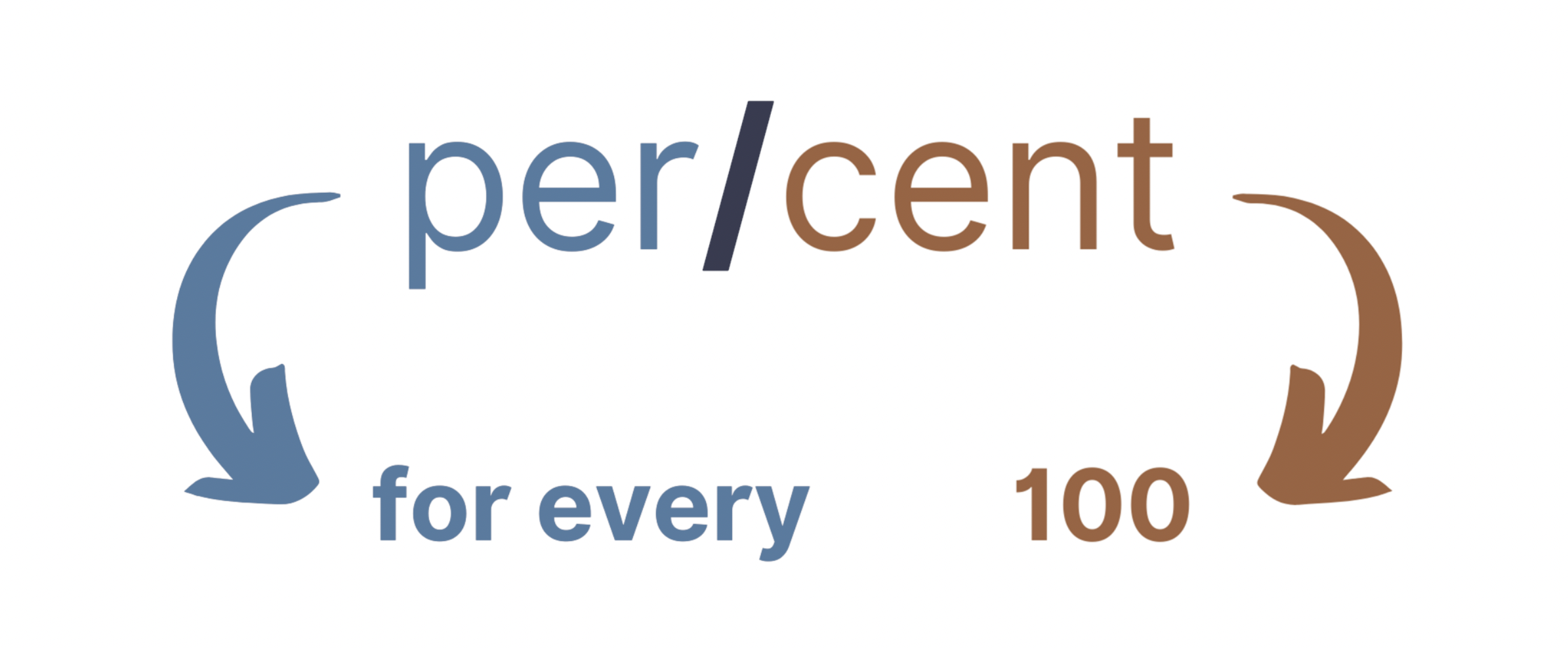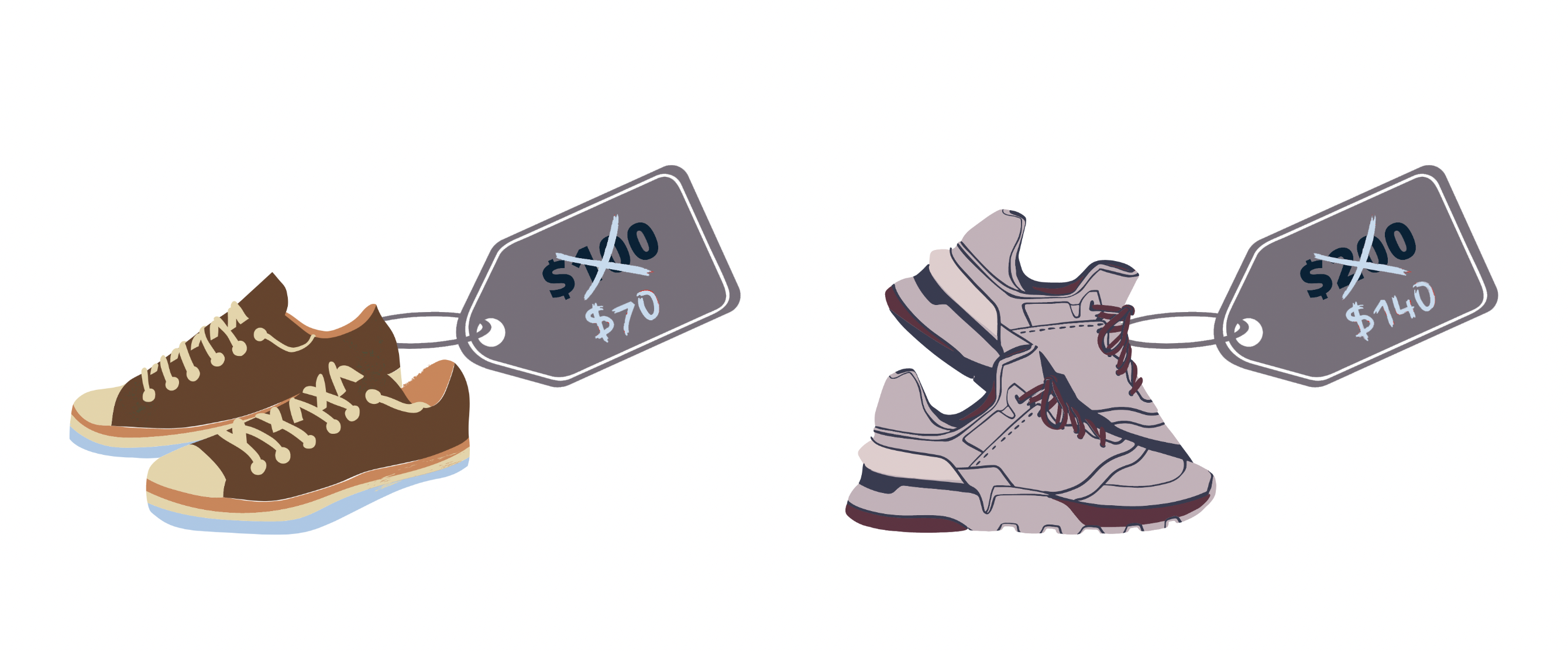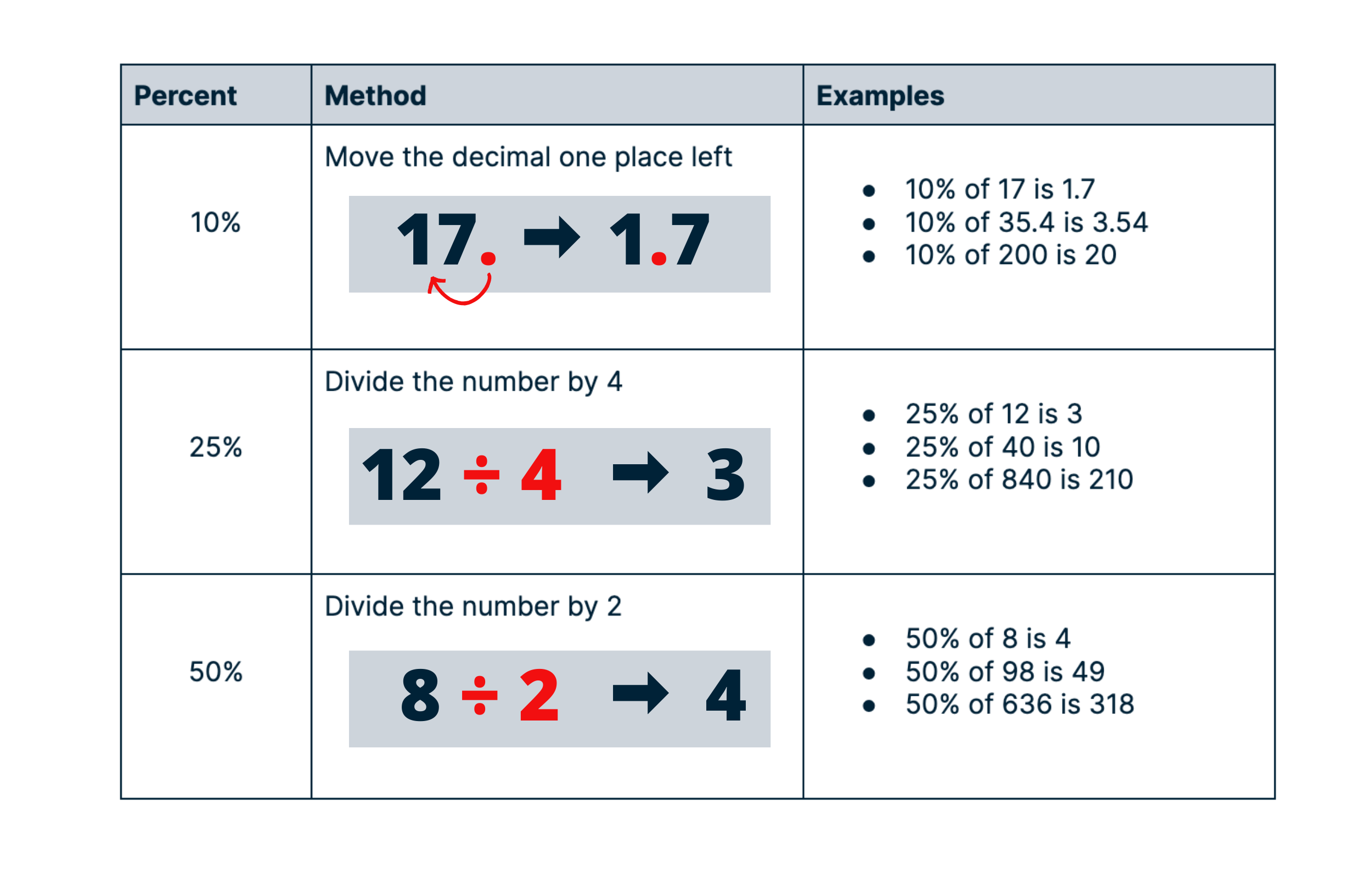When kids first start learning about percents in school, one of the biggest mistakes they make is not realizing that a percent can't be treated the same way any other number can. A sale for 30% off doesn't mean you just subtract $30.
Percentages actually work a lot more like fractions, acting as a part compared to a whole. To understand how percents work, we have to look at what the word actually means. The word "percent" can be broken into two parts: per, meaning "for every" and cent, meaning "100."



